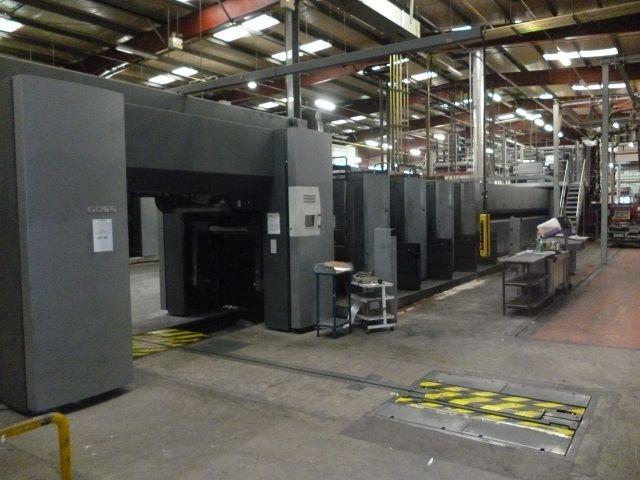Have you ever heard anyone in your family exclaim, “Don’t toss that glossy leaflet, it’s the phone bill!”? If you haven’t, it’s probably because the phone bill, like its utility bill and bank statement cousins, looks decidedly bland – – respectable one-colour offset shell, digital data fill-in.
But 2008 could well be the year of transpromo, and the bills dangling from our fridge magnets could be sporting all the colours of the rainbow, as they spruik their promotional messages from advertising content on the bill.
Right now, at the start of the new business year, it seems incredible that the concept of printing promotional material on essential mail is a niche market. And with the high volumes inherent in upvaluing Australia’s utility, telco and credit card bills and a whole lot more, the question mailhouses are asking themselves is, “How much longer will it remain in its niche?”
All get together
The promise of rich pickings from the embryonic transpromo print segment has already been a factor in driving two milestone mergers in the Australian mailhouse industry last year.
Salmat acquired HPA and soon after, Mailroom Express in NSW, Data Print & Mail in Victoria and SmartComm in Queensland merged to form the new mailing house company, Sydney-based iGroup Australia.
The Salmat integration was formalised on November 2, and Neil Brener, who is now director of integration at Salmat, is tasked with blending the former two entities to position Salmat as the leader in one-to-one marketing.
Said Brener, “HPA and Salmat coming together has created a unique opportunity in the Australian market for transpromotional mail to accelerate. HPA were the leaders in the technology, pioneering with the Versamark and then with its Sugi (FX980). HPA’s experience in colour was one of the contributing factors towards the purchase of HPA.
“Meanwhile, Salmat have made a big push into the one-to-one market, with their call centres, targeted media and lassoo.com online website business. The two companies complemented each other and we’re now in a position to leverage off that.”
Plans are already underway to offer Transactional Relationship Management (TRM) to the broader range of clients across both organisations, noted Brener. “The merger was the ideal catalyst for the growth in TRM in Australia, as we will see in 2008.”
Last year, ProPrint visited HPA’s Melbourne facility and saw a 500,000-impression run using the FX980, which at 50,000 impressions per hour, now claims leadership in both speed and colour quality in high-volume environments. Salmat has since added a second FX980 in Melbourne and has introduced one to its Sydney operations as well.
Intelligent data rules
Meanwhile, the newly merged iGroup is using middle-of-the-range Xerox equipment for its lower-volume direct-mail VDP projects and, while not yet immersed in high-volume transpromo, is likely to stay with toner technology, rather than adopt continuous inkjet. These options are being looked at in a technology study that iGroup has undertaken, said general manager Eddy Abboud.
The merger has given iGroup a three-state footprint and means that a comprehensive range of services will include lodgment from all three eastern mainland states, data manipulation, electronic document delivery, high-speed cutsheet laser printing in colour and mono, high-speed intelligent envelope insertion, plastic wrapping of magazines, newsletters and brochures, and print management.
Said Abboud, “We’re in the process of standardising our processes, practices and procedures and consolidating. We’re now in a position to service the T1 mail generators.”
On transpromo, Abboud said it is “not a very familiar term in Australia but it has been a hot application area and the market is starting to reflect a strong interest from billers and from those producing promotional documents in using the same piece. It’s the printing equivalent of electronic mail on the internet, and like electronic mail, it’s a combination of transactional and promotional, a good use of white space.
“The additional cost is minimal. There’s no additional cost from our services to the customer. If there is a small charge, it will relate to enhancing, managing and consolidating the data between the transactional and promotional sources.”
Abboud sees transpromo as a market that is expected to grow phenomenally, with US projections of a 90 per cent expansion by 2010. In Australia, it will be hard to anticipate growth figures. “But Australian mail generators can take heart from the fact that the tools and the experience for transpromo are located right here in Australia.”
He sees transpromo as building on “a generational preference” for a demographic that is accustomed to paper billing, which he believes is here to stay, at least for the mid-term future. “So why not apply the smarts and the look and feel of electronic mail? It will encourage paper mail to stay relevant for longer.”
In terms of brand management for clients, Abboud sees TRM and the harnessing of existing data as a step beyond Customer Relationship Management (CRM), in which client data has to be collected. iGroup is using IT solutions from Xmpie and Alpha, and these will form the basis of its essential-mail strategy, once the printing hardware is decided.
Vendor bender
Suppliers are also becoming excited by transpromo. In Australia, Fuji Xerox and Oc‚ are offering high-volume toner-based equipment, which allows transactional mail to take on the appearance of sophisticated four-colour, direct-mail pieces. Kodak has invested in its Versamark inkjet technology which offers similar speeds in a spot-colour environment that brings greater economies.
Tim Saleeba, Oce’s business unit manager, document printing, said Oce offers several high-volume continuous-feed toner solutions for the transpromo market, all supporting the Oce concept of Job Appropriate Colour plus Oce CustomTone colour.
In addition to its VarioStream 9000 platform, there is the ColourStream 10000 full-colour system, offering graphic-arts quality at 170 impressions per minute, and the JetStream 1100 System, delivering full process colour at speeds up to 1,026 A4 impressions per minute.
“The release of the full colour digital transactional Oce ColourStream 10000 series heralds Oce’s latest salvo in the potentially huge digital transactional market, estimated to grow by a staggering 91 per cent per year between now and 2010,” said Saleeba.
Kodak Graphic Group believes continuous inkjet, the technology behind the Kodak Versamark, will remain strong. Inkjet rival Screen has developed its TruePress Jet520 and Agfa is offering high-volume transactional printers its high-speed inkjet solution, the Transcolor print engine, based on its :Dotrix engine.
Chad Pearce, marketing manager, customer engagement, Fuji Xerox Australia, says the transpromo market “looks far beyond feeds, speeds and technology. It is the business benefit realised by transpromo that Fuji Xerox has the most interest in. Yes, we’ve proven through our installations with Salmat that the FX980 is a robust, reliable and quality offering. Similarly, the DocuColor iGen3 has the colour quality and speed capabilities required. Yet it isn’t about how transpromo documents should be printed, but why.”
Fuji Xerox sees transpromo slotting in as an integral channel in the marketing mix. “Whilst Australia may be ready, you may also ask what are they doing about using this new marketing tool? Fuji Xerox is regularly involved in discussions here in Australia that signify the corporate market is keen to take advantage of this new marketing tool.”
Comment below to have your say on this story.
If you have a news story or tip-off, get in touch at editorial@sprinter.com.au.
Sign up to the Sprinter newsletter


